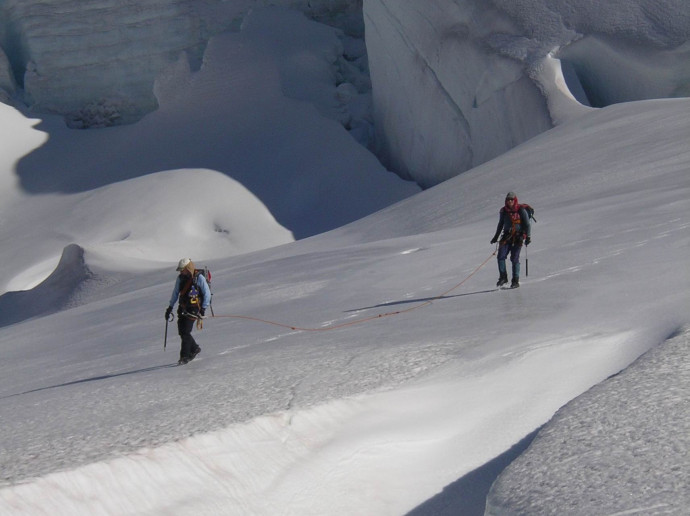Cracking under pressure: do crevasses make glaciers melt faster?

Dr Heather Purdie from University of Canterbury will investigate the impact of seasonally-exposed crevasses on glacial melting in New Zealand’s Southern Alps. Her work will help us understand the response of glaciers to climate change.
Published 8 November 2018

Dr Heather Purdie (Photo: Tim Kerr)
Whether glaciers advance, retreat, or stay put depends on the amount of accumulating snow and melting ice. As the world warms, the snow cover on mountain glaciers is thinning, so that crevasses are exposed earlier in the summer season and have a greater potential impact on glacier melting. Crevasses in a glacier’s surface change the way the glacier interacts with wind and sun, leading to an increase in the rate of melting.
Dr Heather Purdie has been awarded a Marsden Fund Fast-Start grant to pioneer a study comparing melt rates of crevassed and un-crevassed regions of the same glacier. To do this, Dr Purdie will use a drone equipped with an infrared camera to map the shape of the surface of Haupapa/Tasman Glacier. High-tech weather stations erected on the glacier will provide detailed measurements of heat exchange between the crevasses and snow surface, and the overlying atmosphere.
The information will feed into mathematical models to determine the impact that crevasses have on surface roughness of the glacier and the turbulent movement of heat above it, both of which effect melting. The results will demonstrate the influence of crevasses on glacial melt rates. This will help scientists develop better models to predict the health of high mountain glaciers around the world and more accurate estimates of glacial response to a warming climate.
